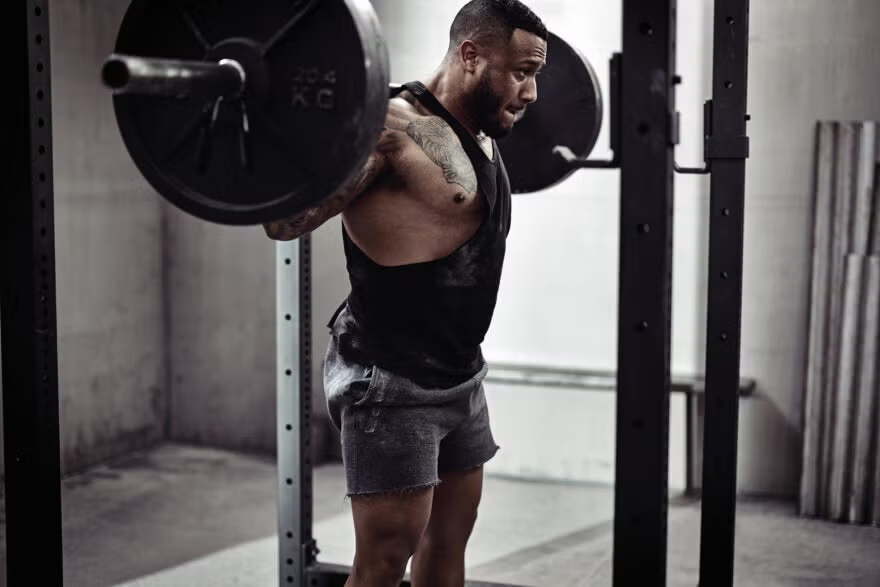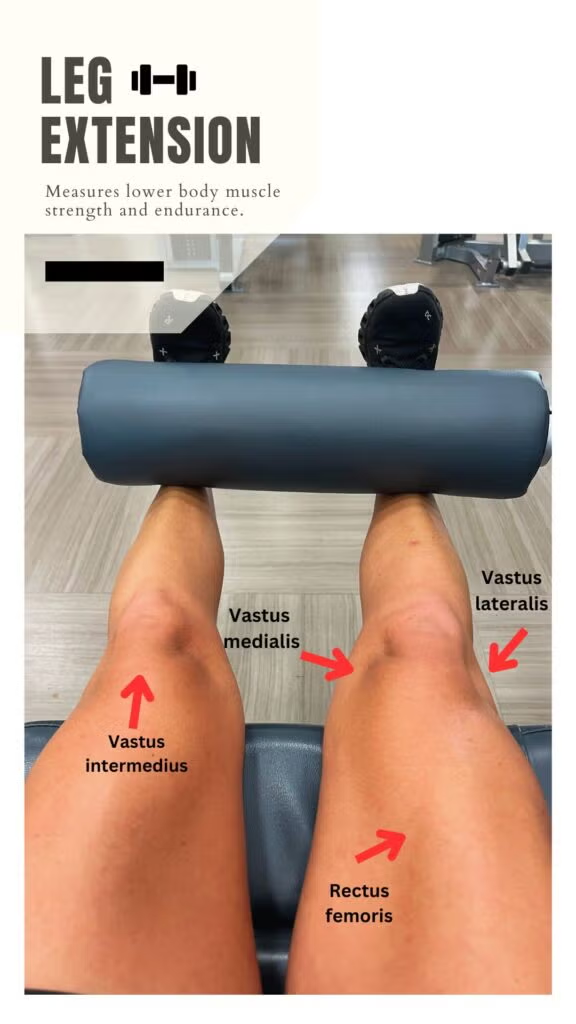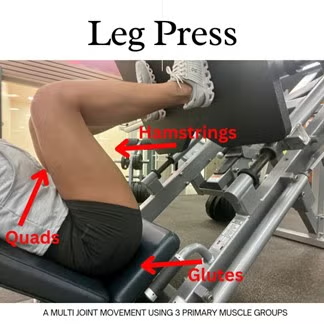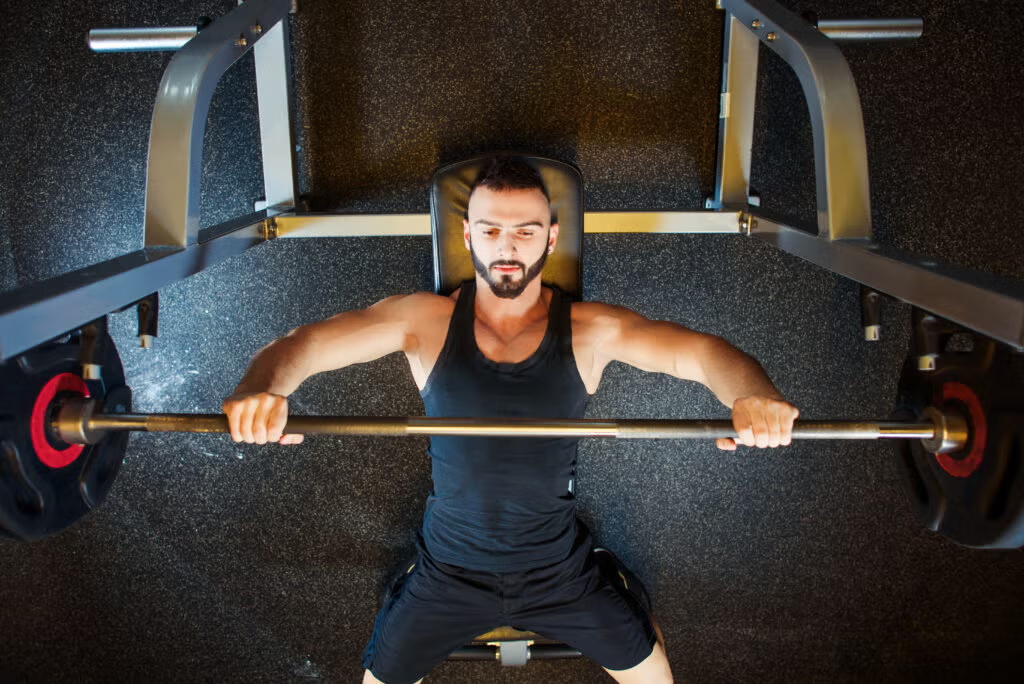
This article will cover why clinical research is so rigid and how it can translate to real-world application for muscle strength, endurance, and size.
KEY TAKEAWAYS:
- Clinical studies are highly controlled to isolate the variable (what we are studying) to answer the research question.
- Research measures should be accurate and valid, meaning they can’t just be anything and need to be vetted as valid in the research world.
- Different types of testing measures are used based on available resources, participants, and study objectives.
- Leg extensions measure the quads which are the largest muscle group in the lower body.
- Bench press measures upper body muscle capacity for pecs, shoulders, and triceps
- Clinical studies help inform how we can improve muscle strength, endurance, and size in the real-world
As an exercise researcher, I have a massive understanding of how research is conducted in a clinical lab. During my doctorate in Human Performance, I realized how much harder research is compared to reading the paper. As an undergrad nutrition student, I often heavily critiqued the methods as an outsider not understanding why they would measure the outcomes the way they did. My PhD helped me gain an insanely different perspective on clinical studies. Now having run my own clinical studies, I have a deeper appreciation for high-quality measures. In my own pursuit of research, I tried to learn the graceful line between controlling the variables (the things we study) and real-life application. I was fortunate enough to participate in a pragmatic research study with firefighters where we took highly controlled clinical studies and applied them in a real-world wellness program. There is a call to action for researchers to better understand practical research. This is called external validity: where what we study in the lab can apply to the outside world. Even with the continuous evolution of research, controlling the study is an essential piece of the puzzle.
Clinical studies must be highly controlled to determine if an intervention was effective for an outcome. Meaning, it’s not exactly how we live our everyday lives. For example, in what world do we have ALL our meals perfectly curated to meet our calorie goals, prepared, and sent magically to our homes?! But it’s how the research world works to isolate the variable (what we are studying) to answer the research question. If we don’t control all aspects as best as possible, we can’t conclude the intervention was the cause that produced the effect.
As scientists we often have more questions than answers and use research to add to the body of knowledge. My area of study is focused on sport performance through nutrition and exercise interventions for tactical athletes. Let’s say I want to know if a particular style of exercise training combined with a nutrition variable can help firefighters gain muscle mass and improve muscular endurance. My research question would be “Does X (the nutrition variable) increase muscle mass and improve muscular endurance?”. My hypothesis is based on what is previously known and maybe a goal to discover something new. Findings from my research with firefighters showed those who meet their daily calorie needs and a higher protein intake had better body composition and better muscular endurance. So now I wonder if two groups of firefighters followed the same training program where one group takes a supplement and the other takes a placebo, if their muscular endurance improves better when using a higher calorie protein supplement. OK, sorry to nerd out but that’s actually a study I have been wanting to conduct!
For those not familiar with research, this would be considered a randomized clinical trial (RCTs). Instead of a refresh from your 7th grade science class on the scientific method, let’s talk about an RCT as the who, what, why, and how. The who is your sample population you are going to include in a study (firefighters), the what is the intervention you are testing (protein supplement), the how is your testing measure (muscle mass and muscular endurance), and finally, the why is your primary outcome of knowing if the what can improve the how!
Circling back to my earlier frustration of outcome measures, how do we take measures from the lab and apply it to life? The “how” measure(s) is selected based on reliability and validity. Reliability says we can “rely” on this measure to provide an accurate measure and validity means the measure does in fact measure what it’s supposed to, meaning it’s “valid”.
Since we covered the basics of research, let’s talk about reliable and valid measures commonly used for exercise resistance training clinical studies. While this is not an exhaustive list, I’ll break down just a few common measures used for muscle strength, muscle endurance, and muscle size. Because after all, a lot of people hit the gym to get stronger, bigger, and workout harder!
MUSCLE STRENGTH
Muscular strength refers to the maximal force a muscle or group of muscles can generate during a contraction or exerted effort. Muscular strength is one of the key components of physical fitness and is essential for lifting, pushing, or pulling heavy objects, and yes, max squats and bench pressing! How do your muscles get stronger?

Strength gains are related to neural adaptions and recruitment of motor units within the muscle. Pause. Motor what? Think about playing tug-of-war. A group of friends are split up equally on both sides of a rope and start pulling. Motor units are the friends, and the rope is the muscle contraction. As the tug-of-war continues, two more friends join in but on the same side.
What happens…more strength. More friends were recruited to play the game and they are now stronger. When we start lifting weights, it’s the same concept. We start recruiting more motor units (friends) to fire muscle contractions (pull the rope), resulting in more strength. This all happens from neural stimuli. To continue those adaptations, you must challenge your body and increase the weight you’re lifting.
Now we know how strength gains occur, how do we measure this in the lab? In clinical studies, muscular strength is often measured by determining the maximum amount of weight a person can lift for a single repetition of a specific exercise AKA One-Repetition Maximum (1-RM). The 1-RM is used at baseline and post-intervention to compare the changes of muscular strength. 1-RM testing can be dangerous and it’s important to have a trained professional oversee this type of testing. Practically in the real world, a 1-RM can be calculated and used to design strength training programs.
Testing 1-RM for muscular strength provides valuable insights into various aspects of muscle health and functional capacity. What you are probably more interested in though, is does this supplement, diet, or training make me stronger?! You might see a claim on your protein powder, such as “Increase leg extension by 30%”. If you’re a veteran gym-goer, you are probably familiar with sitting down on the machine (see image), aligning your knee joint and using your quads to lift the bar and then reset to start again. You probably can’t fully understand why a study measures leg extension when you want to improve your squat strength! Yea bro! Squat gains!
Leg extension is commonly used in clinical studies to determine the ability of your quads to generate force, measure lower body strength, and physical performance. Quad strength is super important for lots of daily tasks and performance. Our quads have four main muscles (hence the word, quad!): Vastus medialis, Vastus lateralis, Vastus intermedius, and Rectus femoris. Our quad muscle is responsible for absorbing force when the heel strikes the ground, flexing at the hip, stabilizing the kneecap, and regulating the way we walk. In exercise and fitness, quads help you run, jump, climb stairs, and squat. So stronger quads typically translate to improved squat performance as long as you’re balancing your training with glute and hamstring work. By isolating the quads in a leg extension, it’s a reliable and valid strength measure for the lower body.
A leg press can also be used to determine lower body strength. Leg press involves pushing a weight away from the body using the legs while seated on a machine. Different from a leg extension where the quads are isolated, the leg press targets the quadriceps, hamstrings, and glutes of the lower body. There are pros and cons to using both the leg extension and leg press, and it typically comes down to the study sample (novice vs. trained) and the equipment available at the testing lab. Fitness equipment is very expensive and not all labs will have every testing machine, but both are valid measures for lower body strength.
Why are deadlifts and squats not common in measuring strength for clinical studies? Deadlifts and squats are very complex moves, recruiting the glutes, hamstrings, and quads. Multiple joint exercises are harder to isolate a specific muscle of interest and increase risk of injury. It’s much safer for research participants to sit on a machine to measure quad strength since safety is the number one priority in human research. The good news is strength in the quads is translated to lower body strength since it’s the dominating muscle group for the lower.
What about claims promoting “upper body strength”? In a clinical study, a 1-RM bench press is often used to determine the strength of upper body since bench pressing recruits the chest, shoulders, and triceps. These are the primary muscles important for activities involving pushing motions. Why wouldn’t they use a push-up? Push-ups are indicative of muscular endurance and not muscular strength. We can’t safely load weight on a push-up if someone’s 1-RM is more than their body weight. Other measures for 1-RM might include a bicep curl on a machine. More than likely, you are going to see exercise machines used for testing 1-RM for single-joint movements to control the entire range of motion. We’ve all seen those guys in the gym swinging the dumbbells to curl more weight than they can control – we all see you, it’s bad form!
As gym goers, we are not training every day at 1-RM but we are likely trying to achieve “Getting Stronger”. This is where clinical studies help inform how we can improve muscle strength. The 1-RM can be used to track changes in strength over time. This is particularly valuable in studies focused on strength training or rehabilitation programs. As you gain muscle strength, 1-RM increases, meaning your load needs to increase during training to continue building strength, otherwise, you’ll stay where you are.

While not as common in clinical research with younger populations, grip strength may be used as a relatively inexpensive functional assessment. Grip strength measures the force exerted by the muscles of the hand and forearm when gripping an object. Seems obvious right? It’s a simple yet valuable indicator of overall upper body strength and can also provide insights into an individual’s general health and well-being. Of course, grip strength cannot directly measure your upper body strength, but it does help us gain insights. Grip strength is often used as a functional assessment tool in rehabilitation research or in elderly populations.
As you can see, there are a variety of muscle strength measures in clinical studies that provide guidance on exercise and nutrition interventions to help you elevate your muscle strength.
MUSCLE ENDURANCE
Muscular endurance measures the ability of the muscle to sustain repeated contractions or maintain a specific level of force for an extended period of time. Unlike muscular strength, which focuses on the maximum force a muscle can generate in a single contraction, muscular endurance emphasizes the muscle’s ability to resist fatigue and perform repetitive tasks over an extended duration. So, think of being able to pump out 3-5 more reps because you have more muscular endurance. More reps result in higher training volumes, putting your muscles under more stress – we will talk about this under muscle size. Gains baby!
A common measure of muscle endurance is known as 80% 1-RM for a specific exercise (i.e. leg extension). This is calculated based on your 1-RM. For example, if your 1-RM is 100 pounds, then your 80% 1-RM is 80 pounds. The 80% 1-RM weight is usually challenging but manageable for a certain number of reps, typically

between 6 to 10 reps, depending on the specific training goals and program design. In clinical studies, the number of reps is established to capture the muscular endurance weight before and after the intervention. The same movement such as leg extension and bench press are used to test the 80% 1-RM for lower body and upper body endurance respectively.
Training at 80% of your 1-RM is commonly used in strength training to promote muscle growth, strength gains, and endurance while avoiding the potential risks associated with attempting maximal lifts. Remember, the more endurance your muscles have, more friends are recruited to tug-a-war adding to your muscular strength.
MUSCLE SIZE
Remember earlier when I mentioned putting your muscles under stress? Lifting weights puts stress on your muscles, causing microscopic tears. This damage triggers a repair and adaptation process, during which the muscle fibers rebuild and increase in size to better handle future challenges. This adaptation results in muscle hypertrophy, aka muscle size.
Now that’s what you’ve probably been waiting for! Because you can physically see muscle gains, you’re probably the most excited about your muscles growing. Muscle gains occur from increasing cross-sectional connective tissue. If we used the previous analogy of tug-of-war, it would be like adding another rope making the game cover a larger surface area and making the rope longer. In addition, the size and the number of muscle cells increase, which contributes to more mass. Think of more and more friends joining while adding more and more ropes. Pretty straight forward.

If you have ever taken a tape measure around your biceps, you were measuring muscle size. In clinical studies however, more valid, and reliable measures are standardized. Since muscle size is increased cross-sectional area, an MRI cross-sectional area (CSA) scan of a muscle best represents changes in muscle mass size after an intervention. However, this can be a costly measure since MRI machines are very expensive. Other measures for muscle mass include ultrasound imaging or computed tomography. These measures are considered the gold standard to accurately measure muscle cross-sectional area for mass gains.
CONCLUSION
Exercise clinical research serves to inform training and nutrition strategies to optimize performance in the world of fitness. The careful collection and interpretation of data provides athletes, coaches, and trainers with the tools to bridge the gap between research findings and real-world application. As technology and research methodologies continue to evolve, the gaps between clinical research and real-life athletic performance will close and continue to improve the standards of sport performance excellence. GNC has a wide range of scientists who can break down the complex clinical studies and translate it to more approachable content. So, keep reading folks! Access your local GNC coaches and dietitians to support your fitness goals.









